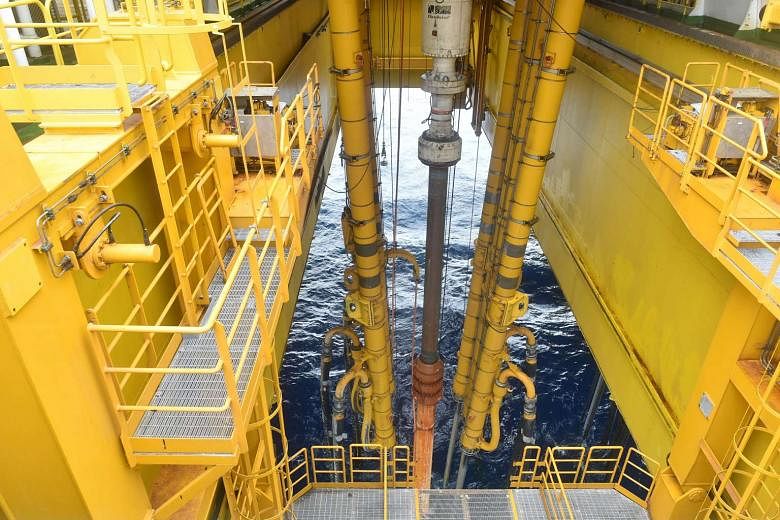BEIJING/HONG KONG - China has successfully extracted gas from an ice-like substance mined from the South China Sea in a development that will help secure the country's energy security, a minister has been quoted by media reports as saying.
Engineers extracted the gas from the so-called "flammable ice" - methane hydrate trapped in ice crystals - and converted it to natural gas on a floating production platform in the Shenhu area of the South China Sea, about 300km south-east of Hong Kong, the Ministry of Land and Resources said on Thursday (May 18) .
It is "a major breakthrough that may lead to a global energy revolution," Minister of Land and Resources Jiang Daming told Xinhua news agency. Chinese authorities hope to commence commercial exploitation of the resource before 2030.
"The production of gas hydrate will play a significant role in upgrading China's energy mixture and securing its energy security," added Jiang.
Methane hydrate is an enormous untapped energy source formed under high pressure and low temperatures in permafrost or under the sea.
It is regarded as a clean energy option with high energy density and releases less than half the amount of carbon dioxide as oil and coal when burned, ministry officials said.
Methane hydrate is formed in such abundance that the US Department of Energy has estimated the total amount could exceed the combined energy content of all other fossil fuels, according to South China Morning Post (SCMP).
In China the substance has been detected in abundancin permafrost in areas like the Qinghai-Tibet plateau, as well as under the South China and East China seas.
The US, Canada and Japan have been leading research into it, reported SCMP. Japan said earlier this month it had successfully produced natural gas from methane hydrate off its Pacific coast and plans to conduct continuous production for three to four weeks.
China has been catching up fast since the discovery of promising reserves in the South China Sea in 2007, said SCMP. Earlier this year scientists built the nation's first land-based drilling platform on the Tibetan Plateau, where abundant methane is trapped under the permafrost.

In the South China Sea operation the gas is being extracted at a test site from a depth of 1,266m below sea level by Blue Whale 1, the ultra-deep-water semisubmersible drilling rig built by the largest semi-submersible platform manufacturer, China Yantai CIMC Raffles Offshore Ltd.
"This successful operation is groundbreaking. Other countries like the US, Canada and Japan are conducting research and operations, but China's achievement means our technology in this area is among the best," Lin Boqiang, director of the China Centre for Energy Economics Research at Xiamen University, told the Global Times.
The test production began on May 10 and has reached a steady output, by Wednesday having yielded 113,200 cubic meters of natural gas, with average daily production of just over 16,000 cubic meters.
For the next step, two to three more drilling tests will be conducted in nearby regions so that more experience and data can be accumulated, ministry officials said.







